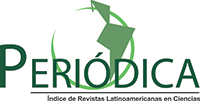Difference in growth and neuropsychomotor development in children attending child education centers in Goiânia/GO
DOI:
https://doi.org/10.5216/ree.v14i1.10382Keywords:
Infant Growth, Child development, infant, Risk Factors, Child Day Care CentersAbstract
ABSTRACT
The objective of this cross-sectional study is to identify the differences in growth and neuropsychomotor development in infants and verify the association between biological and environmental risk factors. The sample consisted of 45 children aged between 9 months and 2 years, who attended municipal daycare centers in Goiânia/GO during the period from March to April 2009. The children were assessed in terms of their growth (weight, height, weight/height ratio, head circumference and chest circumference) and development (using the Denver II Test), in addition to the collection of socioeconomic, family, pregnancy, childbirth, and neonatal data. Girls presented higher weights and height/weight ratios, as well as lower risks for delayed personal-social development. The height/weight ratio was affected by socioeconomic factors and the height was inversely proportional to the risk of delayed language development. The importance of promotion strategies to prevent possible problems in children’s development and growth is reinforced among parents and caregivers.
Descriptors: Infant Growth; Child development, infant; Risk Factors; Child Day Care Centers.













